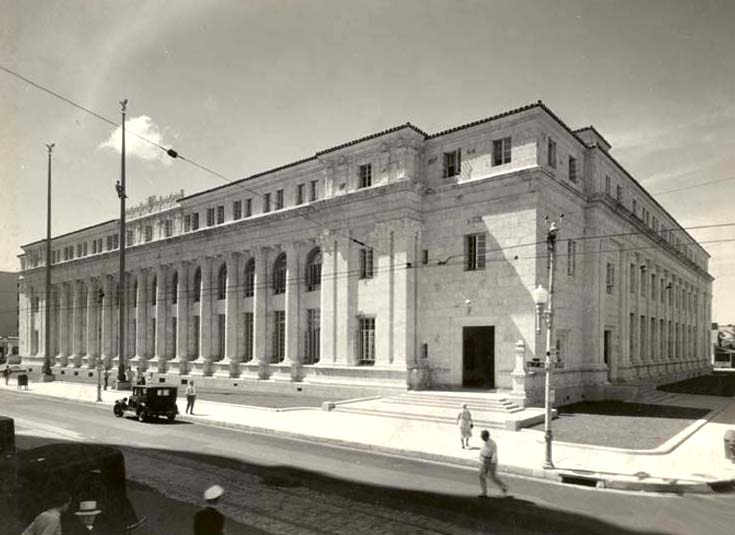
Completed in 1933, the David W. Dyer Federal Building and U.S. Courthouse was designed by the firm of Phineas Paist and Harold Stewart and represents an excellent example of the Neo-Classic Revival architectural style. One of the building’s most significant features is the use of local keystone as a facing material, a South Florida interpretation of an otherwise predominantly classical design. The U.S. Postal Service vacated the building in 1976. It was occupied by federal courts and various federal agencies until 2008.
In 2016 Miami Dade College signed a 115-year lease of the three-story, 179,000 SF building from GSA for use as classrooms and lecture halls following an Adaptive Reuse Due Diligence Report, prepared by R.J. Heisenbottle Architects (RJHA) for Miami Dade College to evaluate the feasibility of converting the courthouse for educational uses.
In 2017 Miami Dade College commissioned Leo A. Daly, Prime Architect and RJHA, Associate Architect for Historic Preservation in conjunction with Arva Parks McCabe as historic consultant to perform the building’s exterior restoration work including the elaborate classical façade including doors and windows with decorative cast stone surrounds and projecting cornice of grotesque heads, main lobby, decorative marble floors and walls, interior courtyard and galleries, ceremonial courtroom, and historical murals.
The general scope of work is to complete the security separation of Dyer from the Atkins Federal Building, provide new and separate utility systems including HVAC, Electrical including lighting/power and low voltage, IT, communications, security, and the disconnect and removal of the existing systems not designated to be reused. Additionally, the separated 162,250 SF of remaining space requires the renovation/ remodeling into classrooms, large event venues, and library spaces, open student collaboration spaces, offices and other related college spaces including the structural modifications required to achieve the new program spaces. Repairs, cleaning and waterproofing of the exterior historical wall system and existing windows is also part of the restoration work. The building was listed on the National Register of Historic Places in 1983.
